This content has been archived. It may no longer be relevant
Find out the best freediving warm-up routine to do from British Team member Carl Atkinson, including what he listens to and how his dive begins the night before.
How did Carl Atkinson develop his freediving warm-up?
Emma Farrell:
What is your freediving warm-up routine?
Carl Atkinson:
I don’t do as many warm-ups as I used to. I used to come up and do lots of freediving warm-up dives. Go for constant weight and realise my legs were just not contracting on the way up anymore. I started realising that if I’m doing constant weight I’d like to do free immersion freediving warm-up dives.
Emma Farrell:
How many?
Carl Atkinson:
I do one, maybe two. Just recently I did a three-minute hold at 100 feet and that was enough for me to get my dive reflex going. I felt good. I was completely conserving the legs.
Emma Farrell:
So the whole dive time was three minutes or you spent three minutes at the bottom?
Carl Atkinson:
The dive time was three minutes. I spent about two minutes at the bottom with a fairly swift pull down pull up. It was a pleasant hold. Nothing too crazy. You want enough to get your dive reflex to kick in for a freediving warm-up. I can definitely feel when I’m in that place when I’ve got it, but you don’t want to push it too far because you do start feeling a bit tired. Prior to that, I had been doing freediving warm-up dives to 50 meters twice.
Emma Farrell:
That’s nuts.
Carl Atkinson:
Yep. I did a dive when I was coming up from 70 meters and I got to around 30 metres on the way back up and my legs just gave up and I had to use my arms to go from there. So I realised that for a freediving warm-up I didn’t need to do that, it was excessive, it wasn’t needed. So I do less on my freediving warm-up dives.
My freediving warm-up routine is also about being away from people. I was very much the same in Taekwondo competitions. You’d have a big hall, with loads of rings and people would be warming up and you’d be kicking pads. I’d have to go away with one of my coaches and find a corridor somewhere. I need to sweat it out and warm up there. It’s a similar thing with freediving. I just need to find this quite little space where I can pretend for a minute no one else actually exists and get myself into the right mental space, start concentrating on my breathing a bit.
My competition dive actually starts when I eat the night before making sure it’s not too late. So when I go to bed, my dive has begun at that point. That’s when you are leading up to it, waking up at the right time. Maybe sometimes doing diaphragm stretches just after I wake up on dive day. I don’t like to really eat before diving. The most I’ll have is a drink. I don’t like to have caffeine on any dive days. I don’t want to promote any raised heart rates.
My freediving warm-up stretches are regular stretches. I’ll limber up the legs for constant weight trying to get my intercostal muscles and my ribs stretched and then really concentrate on calming myself down and listening to music. Music’s a huge part for me. I’ve got a couple of songs that have become lucky songs already. These are good dive songs.
Emma Farrell:
What are they?
Carl Atkinson:
One of them is called Leaving Home by a group called Solar Fields. That’s one of my biggest ones.
Then another one is called How Did I Get Here by someone called, Odesza. He’s an electronic musician.
These are two really good freediving warm-up tracks for me. Somehow I can escape a bit with those. Really gets me focusing on the depth and gets me to a point where I am really looking forward to getting deep where you really want to get down there. I really love that feeling of getting in the water and being almost semi-excited about it.
Then I go in the water, I do one maybe two freediving warm-up dives. Then I do like to have a fair bit of time breathing after that.
Emma Farrell:
How long?
Carl Atkinson:
I like 15 minutes before I go for a proper dive. There’s no technique with breathing. There’s no in nose out mouth or anything like that. It’s switching off from my breathing in a way. I find if I concentrate on it too much I start breathing deeper, and it actually doesn’t work for me. It’s more about my body position. It’s all about the relaxation.
I like to lie on my back because I’ve got a neck weight on, I like to have a noodle. That was something when I went out to Egypt, I was originally lying on my front and someone said try this that I’ve got noodle. Now I’m to a point I literally can’t go without the thing.
I was training in Tenerife earlier this year and I accidentally forgot to take it out at one of the dives and realised quite how lost I am without it. And it’s more about where I get my body. I have to lie in the same position with this noodle in exactly the right place behind my neck and then from there I don’t have any techniques on my breathe up. I don’t do any deep breaths.
Some people maybe do three deep breaths before. I don’t really do that. It’s just really very slow. The only thing I would say is, as I come into the breathing, I concentrate on making it with the diaphragm, making my tummy do the breathing as it were, not so much my ribcage. And that seems to be a huge difference. I’ve done dives where I know that I have not done that and from the moment I’ve duck dived it’s an uncomfortable dive.
When I start making it the diaphragm doing the breathing that makes it so much more relaxed. I’ve got that to a point where it’s quite natural. When I’ve got that noodle in place and I’m on my back, I’ve got my wetsuit on and my neck weight, I’ve got it as a motor program. That sort of kinesthesis. My body clicks in, I’m in breathe up mode now. Then it’s just complete relaxation.
I like to make sure my hood’s got water in it at that point. One because I don’t like hood squeeze. Two because I found out it shuts out the extra sound, which I like to get a bit more internal. Again it’s pretending that nothing else is around me. As much as I can pretend I’m the only person in the water the better for me.
Then completely chilled out breathing from that point on. Not concentrating on anything else. It’s like almost dreaming. I can go on complete tangents of thought, still keeping focused, but tangents of thought. That’s such a huge part of my freediving warm-up. You know when you are in the right place and I think you do know when you are there.
Emma Farrell:
That’s exactly what we teach, that you just don’t do anything. You just relax. The more you can forget about your breathing, the better.
Carl Atkinson:
Yes, definitely. I think it’s that mental training again, learning how to get your brain to the right place that gets you there. That’s like training in sports over and over.
Emma Farrell:
When you are diving deep, where do you set your neutral buoyancy point?
Carl Atkinson:
I’m a little bit under what you would without a wetsuit. Normally for constant weight, for depth stuff, normally my human body goes between 10—15 meters whereas I’m actually more like 20 meters. I wear two kilograms neck weight with a 3mm suit. My neutral buoyancy point is normally about 18 meters, after that I start becoming more negative. So I don’t carry masses of weight on me.
I’ve played around with it, and actually only had one kilo at one point, but I found out I was finning too far down on that. About 20 metres, that’s when I just begin to start coming more negative which is nice because you can kick harder for the first 10 meters and then you slow off monofinning gradually to the point where you just get that last murmur of that last kick giving you enough momentum for that final free fall. It transitions nicely with mouthful I find, stop kicking then, and ready for mouth fill.
Emma Farrell:
On the way back up, do you like the fact that you are more positively buoyant for the last few meters?
Carl Atkinson:
Yes, I do. When I first started doing constant weight, I started kicking rapidly the entire way. So I turned, and I’d think, right! engage legs go!, and I would absolutely rocket up. Then it was more recently I’d already done my 75 PB but still on the way up my legs were knackered, I was really puffed out.
Then I started playing around. Since then, every 70-meter dive I worked out I only really need to pump the legs on my initial turn for a way up, but not the whole way up. I taper it down. Certainly by about 40 meters onwards, I go more into a glide. I realise you don’t need to keep flapping, particularly with something like a monofin.
If you keep good posture with it, keep your arms behind your head, little things, I forget to point my toes enough, when I do that it makes a huge difference when you kick and stop kicking. From about 40 meters I can do a kick and just ride it a long way. And it feels like you are having a rest. Suddenly I don’t feel so puffed, this is nice and you are still going up. Then you just do another kick. They can just become less regular until the last 20 because I’ve got the momentum I don’t need to kick at all.
Then you can concentrate on surface protocols. So I found that really valuable for competition because that’s the next stage. It’s not just about getting up and surviving and breathing. You have to meet all these surface protocols, removing everything off your face, saying you are okay, looking at them, making sure your mouth doesn’t go back under. It can be surprisingly easy sometimes, just that little flick of water or something.
Emma Farrell:
Had you done any monofinning before doing the monofin course with me? I remember we went through all the stages and you seemed to absorb them really quickly.
Carl Atkinson:
I’ve always been a keen swimmer and obviously you do your tumble turns over and over again and you do your wall kick-offs. You don’t wear a monofin for that, so it’s different in that regard, but it is a very similar motion. You still get your arms that are completely streamlined above your head and it’s that learning to move from the middle. It’s like really getting that spinal move, that rolling of the hips in your middle area.
I’d already had that from years at swimming and drilling that into myself. I normally swim five days a week before work, so my muscles are attuned for that anyway. The addition with this, was just putting the monofin onto it. So it’s a slower kick now, it’s a slightly bigger movement, but my muscles are still tuned in there and that movement was kind of already there. It was more tweaking something that I knew from another sport and just slightly altering it for a new realm. That made a big difference.
The Monofin course was so good because I’d never had a monofin on. It was just seeing other people do it, toying around. You videoed it,and that’s something that I’ve never done before which is really good to be able to video something, look back on yourself because you don’t know how you look, you don’t know how you feel. You might feel like you are moving quite straight along in a pool and very horizontal to the bottom and then realize I might have a bit of an angle here. So things like weighting and stuff like that as well as technique. That was hugely valuable and filming and watching yourself back I found that very good in all disciplines, even if it is a little vain sometimes!
Coming up in the next article… What is Carls’ current training plan?
Read Part 1 of our interview series here: How Carl Atkinson got into freediving and how Taekwondo helped
Read Part 2 of our interview series here: The disasters and triumphs of Carl Atkinson’s first freediving competition.
Want to read more about Carl Atkinson?
Then subscribe to our mailing list for weekly newsletters with exclusive articles, news, films, offers and more!



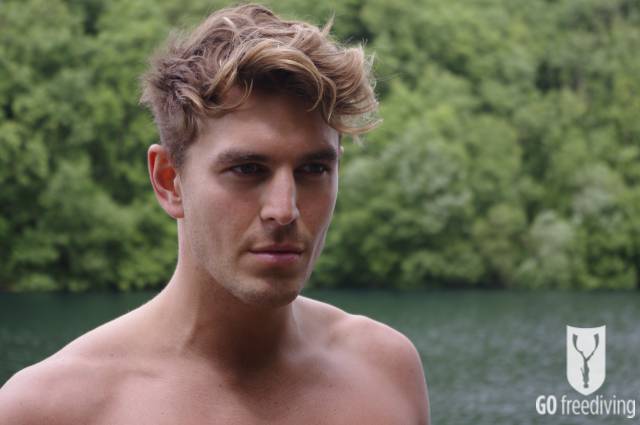
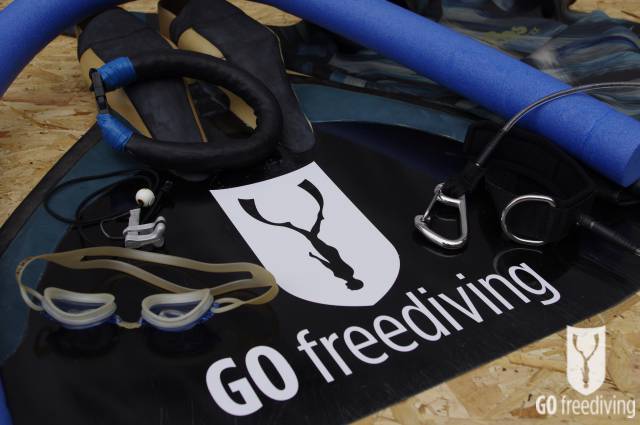

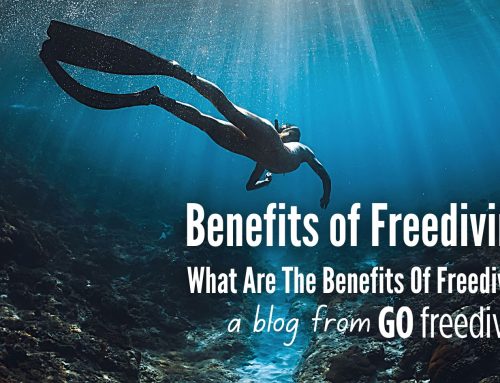
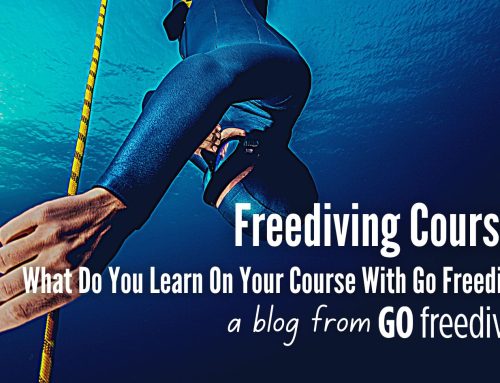
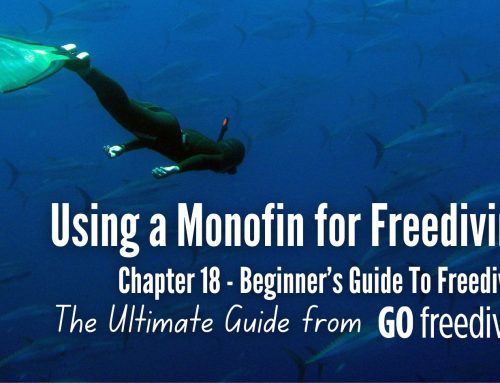
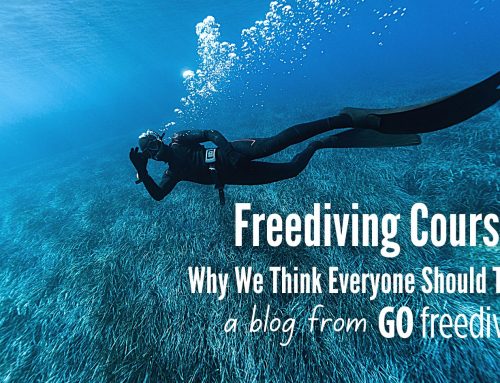
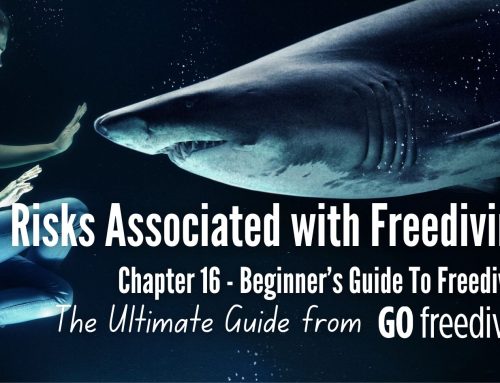
Leave A Comment